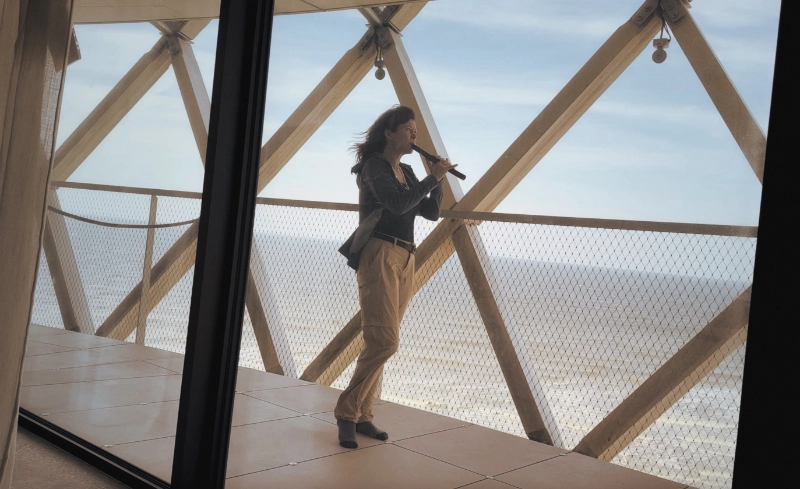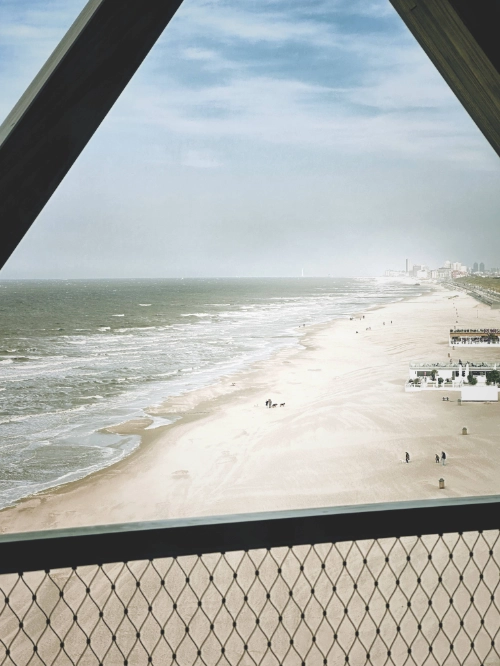Waka poetry - Namima
Tucked between ink and bamboo
Waka is an ancient poetic form that blossomed in Japan during the Heian period (794–1185). Composed of 31 syllables arranged across five lines in a 5-7-5-7-7 rhythm, it is the forerunner of the tanka. This refined verse was treasured by nobles and scholars alike, a means of expressing love, grief, the beauty of a passing moment, or the tremor of an unspoken insight.
Waka is an art of suggestion, where emotion shimmers just beneath the surface, never fully revealed. It captures the ephemeral: the fluttering of thoughts in the breeze at dusk. Every word is chosen with deliberate care; every image is a door left slightly ajar, a quiet invitation to step into the poet’s inner world.
 Ok, point made : hitoyogiri doesn’t blend -at all- with sea gales.
Ok, point made : hitoyogiri doesn’t blend -at all- with sea gales.
Wait —Is this still a website about bamboo flutes ?
Fear not. I’m getting to the point. The hitoyogiri, let us recall, is the small ancestor of the shakuhachi, born during Japan’s Muromachi period (1336–1573). It was often associated with courtly music and refined entertainment, mostly played in the quiet of a hermitage or the solitude of a tea pavilion (although rumor has it that samuraï would take it along during war campaigns).
But it was never merely a musical instrument. Its vivid, ethereal tone—slightly fractured, like a breath caught between two silences—evokes the wind in the pines or the hush between unspoken words. Like the waka, the hitoyogiri speaks through suggestion. It does not aim to please, but to echo that which cannot be spoken (a gentle wink to our friend Lao Zi).
One might say they are kindred spirits, born of the same era, and joined at the heart:
– Waka, with its suspended words.
– Hitoyogiri, with its shifting tones and its ability to dissolve into the flow of the moment.
Both invite us to slow down, to listen—not to what is said, but to what unfolds between the lines, or between the breaths.
On writing, loosely
As you might have guessed, I’ve got a thing for Japanese poetic forms. What I seek in them is not perfection (I do not follow traditional rules to the letter), but a space where I can place a memory or a feeling. What interests me is that tipping point where words brush against sensation. Where a stroke becomes image, pulsing across time and space without ever losing its freshness.
So let us begin.
A Note on the Haibun
The structure I use here is inspired by the haibun, a Japanese form that weaves together poetic prose and a brief poem.
Popularized by Bashō, the haibun often accompanies a moment of inner or outer journey, with the prose laying a sensitive groundwork that the poem then distills into a crystalline impression.
This piece doesn’t follow the traditional form exactly though…I’ve chosen to use two waka instead of a single haiku.
Middelkerke – April 20, 2025
My mother loved the sound of waves. She used to say it could heal all wounds. Perhaps that’s why I’ve come—today, on her birthday. Here, I don’t need to look for her. She’ll always live on, in the space between the waves.
Namima
Gales on my window.
Inside, everything’s quiet.
Out there, waves go wild.
Far off, Ostend stirs and yawns,
Twirling in a sandy cloak.
The wind’s faint song,
Buildings wrapped in drifting gold.
My heart will always belong here,
Where wave meets wave and disappears.
